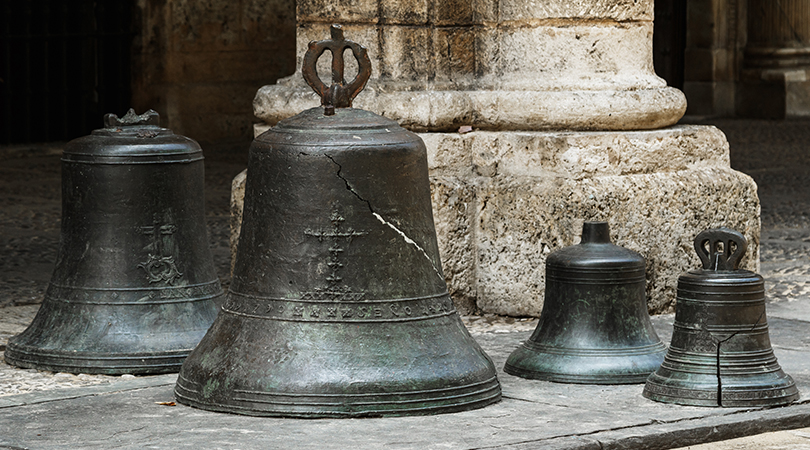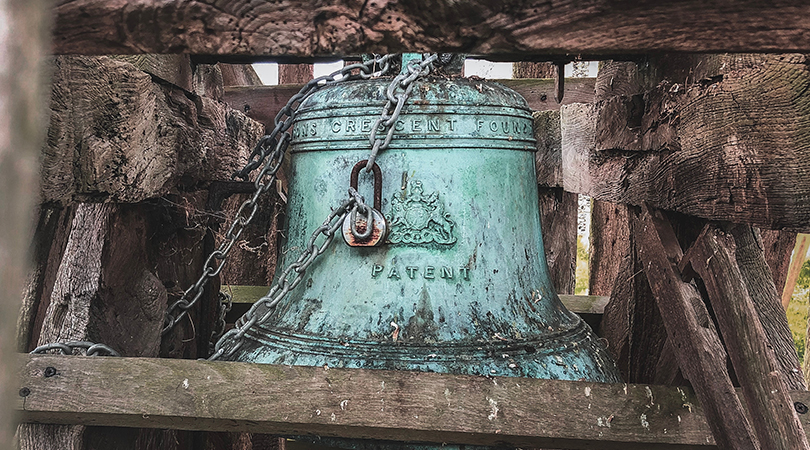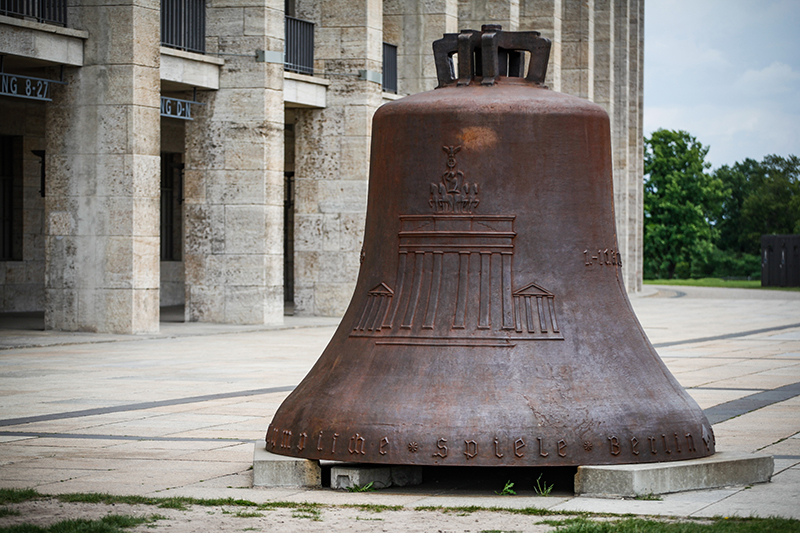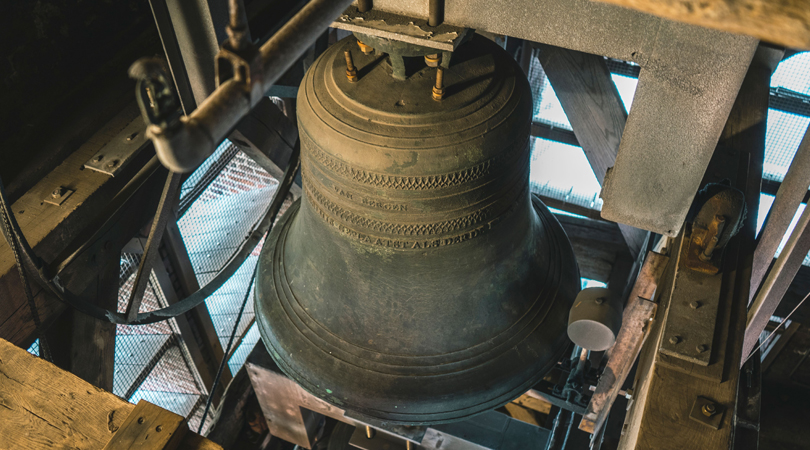What to do with bells in a closing church or belfry.
Bells are more than just a building’s furnishings. They are the heartbeat of a community and an aural connection to the neighborhood. Their silence will be lamented by many. If you are the custodian of a bell tower or bell that has become redundant, the National Bell Festival can help guide you through the process of rehoming your bells.
Secure unused bells
First, consider the bells’ security in the interim period between closure and reuse or relocation. When a bell tower is closed, the unused bells are left vulnerable to theft and vandalism. Care should be taken to properly secure and monitor the belfry, so that the bells and bell tower do not become tempting targets of criminals, vandals, pranks, and dares. Alternatively, should the situation require, the bells could be relocated to a more secure facility or deposited with another institution for temporary safekeeping.
Thoughtfully consider a bell’s heritage and potential
Next, plan a path forward for the bells. Bells can last for centuries, ringing in good times and bad. They become an intrinsic part of the community. What will you do with these valued objects now that they have fallen under your stewardship? We recommend one of these scenarios, in order of descending preference.
- Whenever possible, bells should be kept in their original setting and regularly maintained and rung. Adjusting the ringing schedule or opening the tower for historical tours might better align the bells with the building’s new purpose.
- If the bells must be removed from the belfry for safety, structural, architectural, or other reasons, they should be rehoused for use in a purpose-built structure on the same grounds.
- If it is not feasible to relocate the bells for use on-property, the bells should be exhibited for public display in a protected location at ground level, with signage contextualizing the history of the bells. In this manner, the bells are available for lifting back into a tower at a point in the future.
- If it’s not possible to maintain the bells yourself, they should be repurposed for the benefit of the local community. Engage with community leaders to determine how to retain the bells and keep them serving the same neighborhood in a nearby location.
- If bells must travel outside their native community, then they should be sent to a new location with an understanding of provenance and all the guarantees afforded artifacts of equal age and significance.
The motivation behind these recommendations is two-fold: to keep bells ringing and operable, and to ensure proper historical documentation and context. For additional background on giving bells purposeful use in a new setting, read our letter to the editor of The Economist.
Section image: The bell at All Saints' Church in Wrabness, United Kingdom, resides within a wooden cage, having been relegated to the churchyard after the bell tower collapsed in the 17th century.







